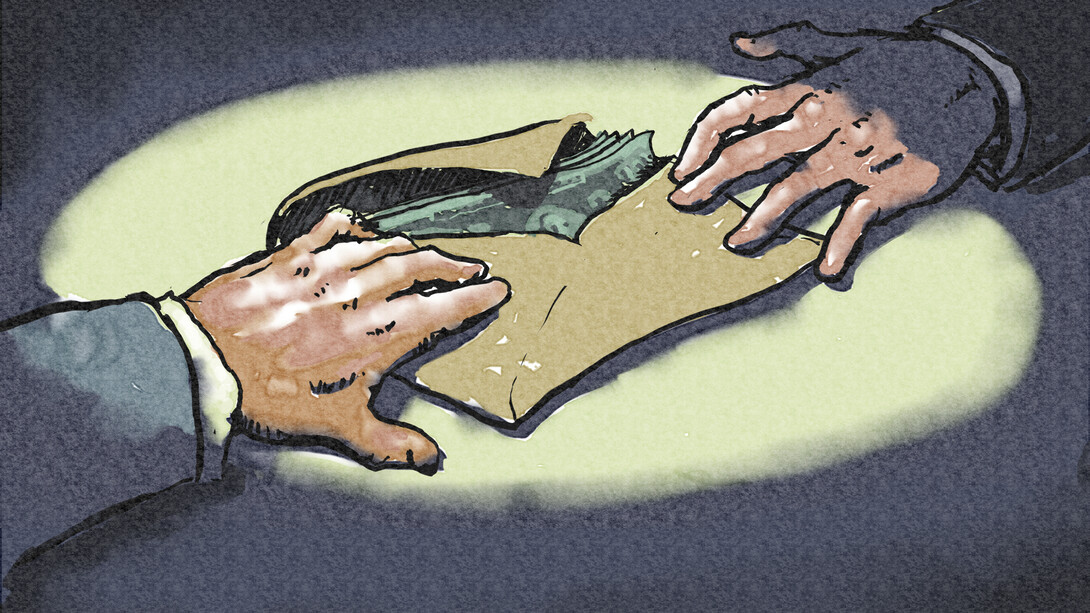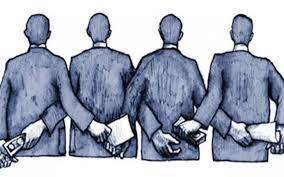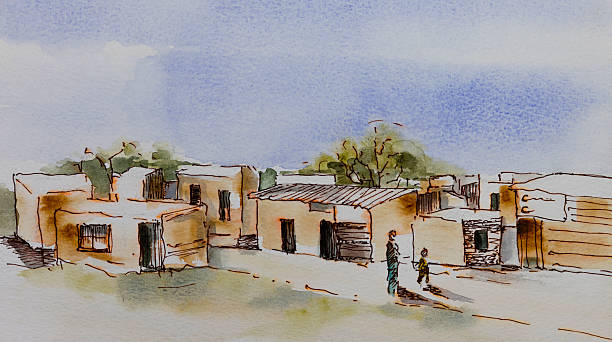Introduction
It is music to the ear when promises relating to corruption are uttered by politicians during and after campaign rallies. Some of those utterances, and even efforts, are heard and seen by persons in leadership hinting towards their commitment to fighting corruption (Githongo, 2007), yet inversely, these leaders demonstrate helplessness, amidst unwillingness in their fight against the vice (Maina, 2019). Other utterances are heard when leaders from one side of the political divide blame those from the other side (van Rij, 2021); those who blame, attempt to portray innocence in matters of corruption (Médard, 1992; Daloz, 2003), and often front themselves as best placed to fight the vice (Cheeseman & Willis, 2021). There are still other utterances from the public, crying foul and blaming ‘all’ their failures on corruption (Burbidge, 2015; Maina, 2019).
This paper seeks to discuss the subject of corruption to seek comprehension of some of the issues given in the previous paragraph. It systematically engages literature from the global, regional, and local levels (cf appendices). The selected literature follows the inclusion criteria: definitions of corruption; types of corruption; extensive data including vast localities, and elucidations on causes, effects, and solutions. As a guide, the study responds to the following questions: What is corruption? What faces does corruption take? What phases does corruption follow? What is wrong with corruption? What makes corruption so elusive despite efforts to combat it? What needs to be done to combat corruption? The paper is written to inform Africa but specifically Kenya on matters of corruption.
What is Corruption?

Goel and Nelson (2008) define corruption as “the use or abuse of public office for private gain” (p.7; Nye, 1967; van-Klaveren, 1989; Ampratwum, 2008, p. 77), contravening set rules and regulations (Jain, 2001). Adding to the discourse, Uslaner and Rothstein (2016) describe it as “behavior that is opposite to “ethical universalism” or “impartiality” in the exercise of public power… [or] officials turning “public goods” into private goods for their benefit (p. 227; Mungiu-Pippidi, 2006; Rothstein, 2011; Rothstein & Teorell, 2012). In addition, there is Christian Aid’s definition of corruption says it is “The misuse of positional power – public or private – to benefit narrow interests rather than the public good” (McDonald, 2008, p. 5).
From these definitions, the following key phrases arise; abuse of public office or misuse of public/private positional power (including secular and religious), opposite to ethical universalism and impartiality; using public goods for private gain.
From the phrases, public officers remain the highest instigators of corruption, while the general public becomes the greatest culprits. Nevertheless, from MacDonald (2008), corruption is also instigated by private power holders (Thelander 2005).
Too, the practice is against the ethical principle of impartiality. As summarised by Karl Krauss, “Corruption is worse than prostitution. The latter might endanger the morals of an individual, the former invariably endangers the morale of the entire country” (Majeed, & MacDonald, 2011, p. 2).
It is with the continued venom that corruption continues to spill on Kenyans and Africans in general, that this paper is written.
Political discourse appertaining to leadership in Kenya has increasingly discussed integrity on many occasions quoting Section Six of the Kenya Constitution (2010).
A significant number equates integrity to corruption and reduces its litmus test to being subjected to a court process and having been convicted (TI, 2012). Such a reductionism, perpetuates justifications fronting a society that lacks the desire to deal with integrity issues. In the appendices, the write-up has created a 27-entry questionnaire developed from Agunda (n.d); Chapter Six of The Kenyan Constitution (2010), and the Leadership and Integrity Act (2012).
The Likert scale evaluation questionnaire aims to have the individual reader, take this test about the self, in reference to known local leaders (religious, public servants, and politicians), before embarking on doing the same with national leaders. Only after a clear understanding of the integrity of identifiable indicators, can one meaningfully engage in its discourse.
For the sake of this paper, integrity takes on the definition from the Oxford Advanced Learner’s Dictionary (2000, P.623), “the quality of being honest and having strong moral principles”.
Its entries are as given in the appendices.
On its part, the definition of corruption is as given in the prior paragraphs, where it entails using positional power-public or private- for narrow private gain rather than for public good. The convergence of integrity and corruption is noted in the following entries: iv and vi of the general code of conduct and ethics for public officers, namely, “Prohibition from improper enrichment” and “Collections of and soliciting for funds” (Agunda, n.d. p.1).
Only two of the 15 entries given, point towards corruption in the way defined prior. Concerning the Leadership and Integrity Act (2012), and Article 232 (1) of the Constitution of Kenya Chapter Six, entries vi, ix, xi, xii, xiii, and xxvi (six out of 28 entries), speak of corruption (Agunda, n.d., p. 3). These are: “Financial integrity including the prohibition of unlawful enrichment and acceptance of personal loans/benefits; Wrongful or unlawful acquisition of property; Participation in tenders; Public collection of funds; Opening or operating a bank account outside Kenya; and [avoidance when it comes to] Payment of taxes, financial and legal obligations.”
 All the other entries explore the issue of integrity that surpasses the mere taking of bribes and being corrupt at the level of profiting oneself.
All the other entries explore the issue of integrity that surpasses the mere taking of bribes and being corrupt at the level of profiting oneself.
The focus of leadership and integrity, therefore, is more on sustainably building a just society.
It is based on this and founded on the given understanding of corruption, that this write-up chooses to focus on corruption, and at a later write-up, deal with the larger issue of leadership and integrity.
Reducing integrity to these corruption issues does de-service to the Constitution and Kenyans.
What Faces does Corruption Take?
While it is all right to stand on political platforms and promise to fight corruption, the fight must be tailor-made to specific areas. The paper hypothesizes that part of the failure to deal with corruption in Kenya has been pegged on the attempts to wholly deal with it. This section thus deals with notable identifiable indicators of corruption.
- LAND INJUSTICES: Boone, (2012) discusses the land conflict in Kenya. He addresses how land distribution has been carried out in this country. In Kenya, land issues are noted as largely contributing to the classifications of persons into haves and have-nots; rifts between ethnic communities; and subsequent large expressions of discontentment, leading to high levels of corruption (Syagga, 2013; for a comprehensive summary refer to the appendix). It raises questions when politicians talk of the issuance of title deeds to the Kenyan landless (Kanyinga, 2000; Kenya Land Alliance, 2018); “how elites grant or withhold property rights to consolidate political support or suppress rebellion” (Klaus, 2020, p. 2; Boone, 2014).

This apparent act of benevolence continues to be used as political bait to woo voters. No wonder it often comes just before elections.
Why should Kenyans be given land by leaders? When and how did poor Kenyans become landless, and now have to be favored through being given land?
It is not also surprising that there are constant demolitions and large numbers of squatters (Kanyinga, 2000). It is certainly an insult for a Kenyan to be a squatter in their own country, and to live with constant fears of the ugly reality of evictions. Only when this is genuinely addressed, can we discuss forthright efforts toward fighting corruption.
- TOKENISM: Linked to land, Syagga (2013) highlights how during the Kenyatta and Moi Governments, the land was used as a token to propagate political patronage. Direct land grants were issued leading to increased disgruntled individuals and fueled corruption. Further discussion on tokenism defines it as “‘the policy of making only a …symbolic gesture toward the accomplishment of a goal…’ or ‘the practice of hiring or appointing a token number of people from under-represented groups to deflect criticism or comply with affirmative action rules.’ … [it is] a cosmetic treatment of a situation that does not get to the root of the problem…[it] does not [bring] change [in]… social systems but works to preserve them, since it dulls the revolutionary impulse.’” (Nanyom, 2007, p.7/8).
On this note, tokenism that may pose as care to the needy pacifies the electorates’ efforts to question their leaders, pavers their freedom in critically electing the right leaders, and thus contributes to the proliferation of corruption.
In Kenya, not only do we experience tokenism during the electioneering period, but also when seeking services. It is often given in the form of a bribe. Nilsson (2009) discusses the issue of bribes. In addition, Thelander (2003) gives a thorough analysis of types of bribes under the sub-title “advantaging”. With tokenism, its practice may start as a sign of appreciation, then a subsequent growth into seeking favors, getting an undue advantage over those that are not extending the token, and later flourishes into situations where no service is given when one offers no token. These stages hence make tokenism a favorable prerequisite for corruption as realized in Kenya.
- PROCUREMENT: Procurement refers to the “supply of inputs that are important for all levels” and functions of the public establishment (Manyara, 2016, p.1). In Kenya, procurement takes 45% of the national budget (p. 6). With such large amounts readily collected and available, the area attracts high levels of corruption, averaging between 10 to 25% of contract value (TI, Corruption & Public Procurement, 2010). Evidently, as per the Kenya Corruption Perception Index (2010), the country lies 139th out of 176, with 80% of the corruption being in procurement (KACC Perception Survey, 2010). Notably, the Public Procurement and Disposal Act, plus other relevant legislations, are yet to make a significant impact.
According to Manyara, (2016, p.39), Collusion (C)of officers awarding tenders [but also collusion of values, and interests], Remuneration (R), Pressure from Management (PM), Pressure from Society (PS), Social Status (SS) and Protection (P) [among officers] are key factors contributing to corruption in the procurement process. Corruption in Kenya is realized through “inviting only preferred firms for bidding, favoring and designing tenders in favor of particular firms and giving confidential information to firms of interest (Manyara, 2019, p. 39; Odhiambo & Kamau, 2005).
Procurement, therefore, becomes an ugly face that corruption in Kenya takes.
With the continued substantive amounts from taxes ending up in individual pockets, the very tax-paying Kenyans are largely disadvantaged. Indeed, they are robbed of their hard-earned money, increasing their levels of poverty while on the contrary enriching few public officers. The Procurement Act aimed at ensuring transparency and accountability (OECD, Government at a Glance, 2009), is certainly yet to effectively combat the vice. The next face of corruption is advantaging.
- ADVANTAGING: Corruption is looked at as a bribe (Nilsson, 2009). Michael Reisman defines bribes in three ways: transaction bribes-given to speed things up or make proceedings move quicker; variance bribes- get the recipients to bend the rules; outright purchases bribe-buy the recipient so that he gains instead of the organization (Thelander 2005, p, 14/15). In this face, the giver of the bribe is advantaged in that the time spent is lessened while the recipient profits financially.
 However, others in the queue are denied justice. Engaging in the practice over time, proliferates into a no bribe, no service situation.
However, others in the queue are denied justice. Engaging in the practice over time, proliferates into a no bribe, no service situation.
Also, when the rules of the organization are bent, the public good receives the harm and by extension the general public. This may be in the form of the beneficiary not receiving the penalty that is accrued by the act.
A case in mind would be when motorists (vehicles or even motor riders) get involved in an offense and bribe the traffic police, thus getting authorization and protection to go on with the wrongdoings (Onyango, 2022).
As long as corruption continues to proliferate in Kenya, justice is denied to those whose hard-earned money is “stolen”, the gap between the rich and the poor continues to widen, and the country’s poverty levels continue to escalate.
Power-money-injustices-poverty-corruption is certainly bed-fellows in Kenya. Persons make use of the power vested upon them to engage in corrupt deals. Through the corrupt deals, they facilitate injustices to the citizens they are meant to serve and in so doing, nurture injustices and poverty. The continued question is what needs to be done to change this trend?
Also, Kenya appears to continue to suffer the consequences of corrupt leadership.
Starting from Kenya’s independence, the office of the president was made extremely powerful to a point that all those around this leadership could literary do anything without being questioned (Nilsson, 2009).
This led to an immense implant of corruption (Johnston, 2005). With time, this vice has continued to trickle down to lower offices (Syagga, 2013), county governments, and even to the private sector (van Rij, 2021).
With the clear implications that corruption generates, additional efforts are needed.
Various African governments, not leaving out Kenya’s Jubilee Government, have been challenged on matters related to heavy borrowing (Bett, 2018; A.I., 2022). While this is not negative in itself, it has been associated with huge government spending (hefty spending on non-budgeted projects (Ndii, 2017; Kagonye, 2022). These state-related situations contribute to corruption raising various questions: concerning government fiscal planning (including borrowing, distribution, and spending), how much should state officers (including the president, the elected county leaders, and parliamentarians) do without public participation defined as “the involvement of those affected by a decision in the decision-making process” (The National Assembly, 2017)? As noted in the same sheet, public participation needs to inform “the process of interaction between an organization and the public to make an acceptable and better decision. The process involves informing, listening, dialogue, debate, and analysis as well as the implementation of agreed solutions” (p.2). Without public participation, fighting corruption becomes a huge challenge.
In Kenya, the utilization of resources has to prioritize public interest: food security, affordable and accessible health care, work and employment-related education, as well as improvement of household earnings, and key issues in individual and societal development (Kiingati, 2021). Rendering this secondary place, or diverting finances intended for these, to private and non-priority projects, adds to corruption.
In addition, other worrying trends instilling fear in the public include extra-judicial killings (A.I., 2022) that are associated with the law enforcers.
These add to the efforts to silence the public in fighting for justice.
Thus, creating fertile grounds for continued corruption. Addressing these faces of corruption is key to making steps towards a more democratic and corrupt-free country.
Before embarking on the action plan, the phases that corruption follows are given.


